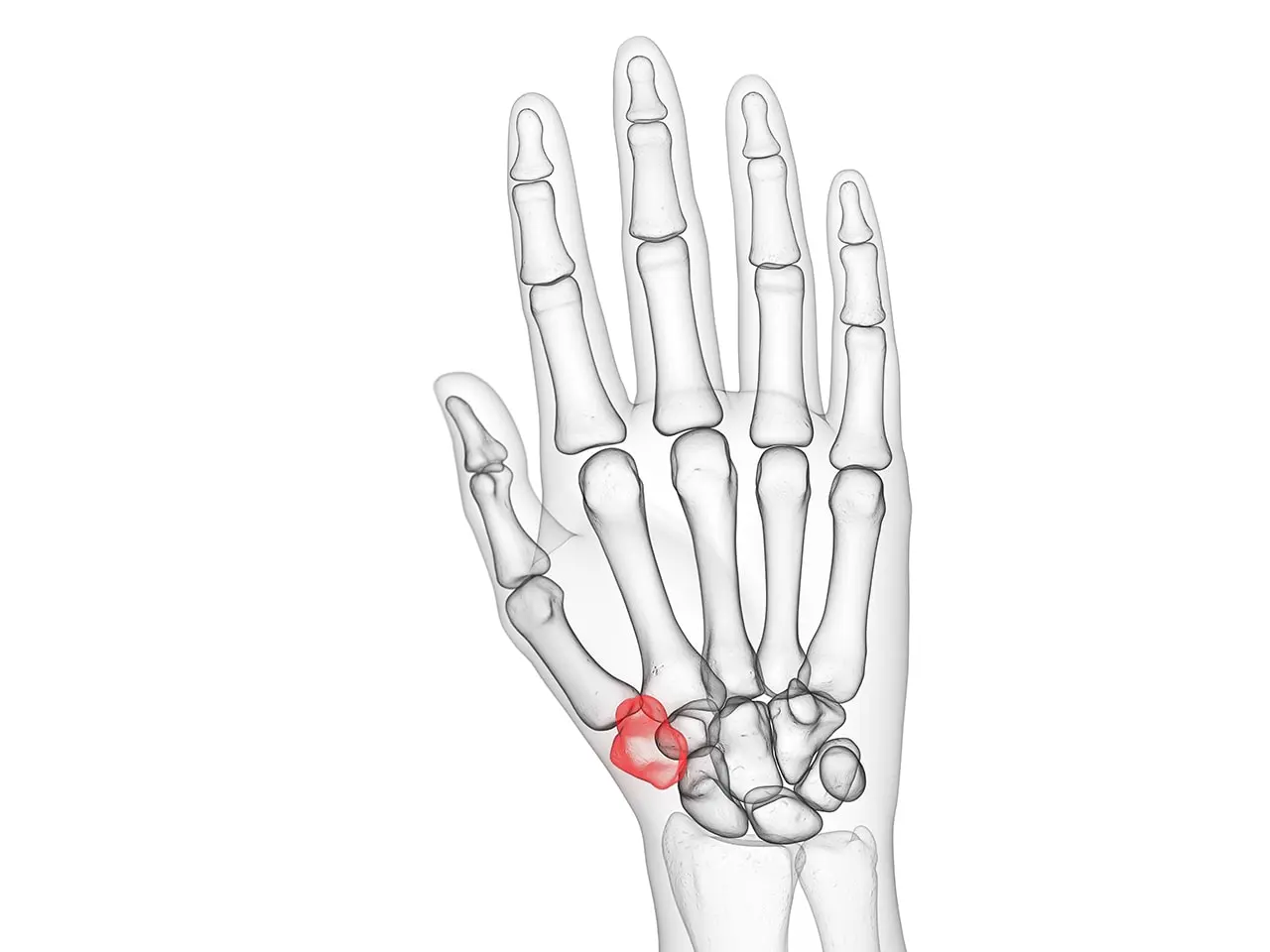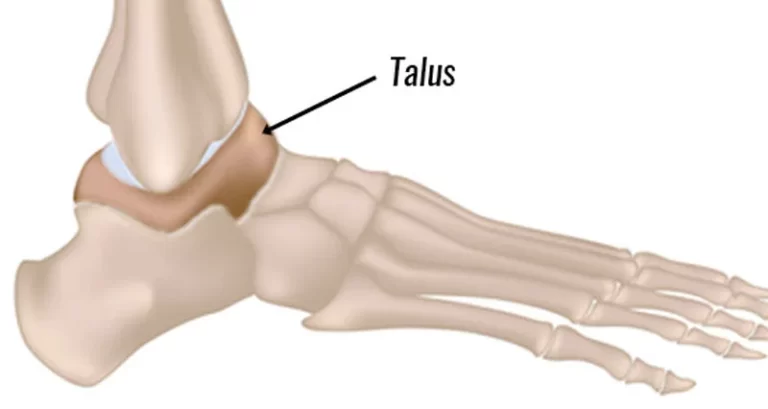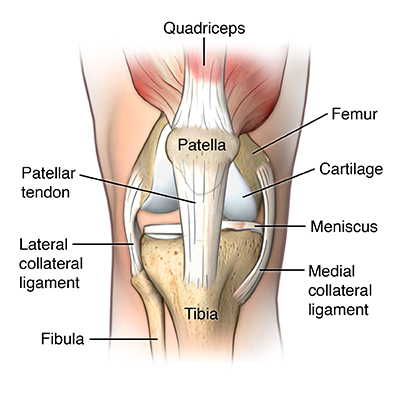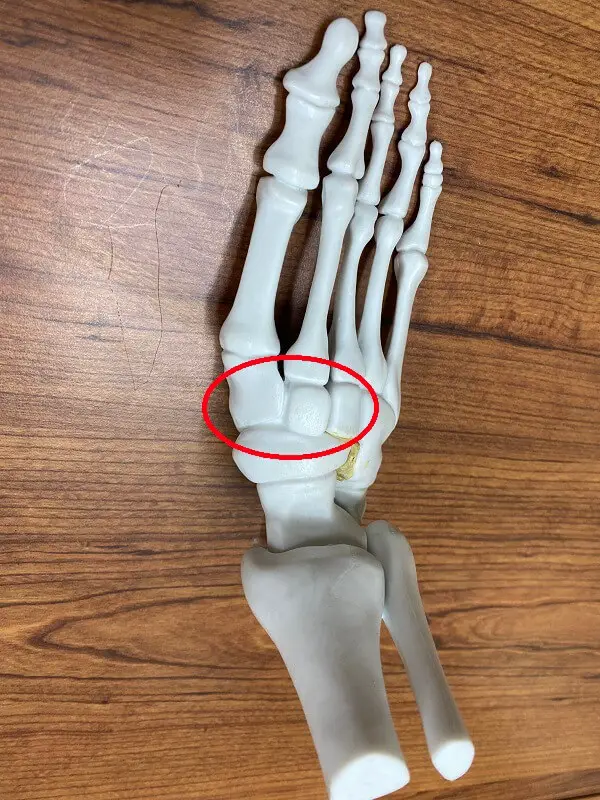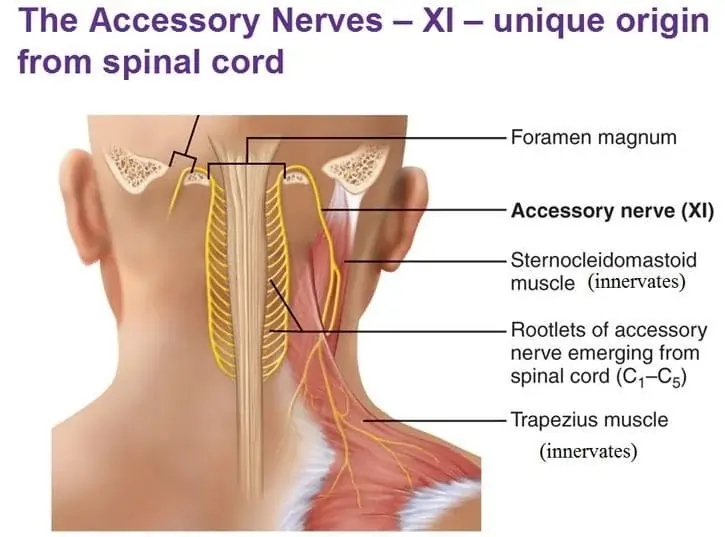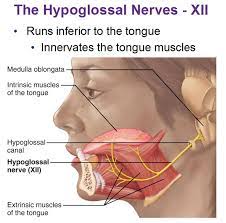Trapezium Bone
Table of Contents
Introduction
The Trapezium bone is one of the eight carpal bones located in the wrist. It is situated at the base of the thumb, forming the radial side of the carpal tunnel. The trapezium bone is unique in shape, resembling a wedge or a quadrilateral with rounded corners.
The blood supply to the trapezium bone is primarily provided by the superficial palmar branch of the radial artery. This branch arises from the radial artery and runs along the palm, supplying blood to the palmar aspect of the trapezium bone.
Anatomy of the Trapezium Bone
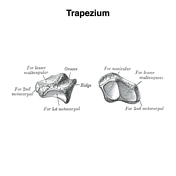
The trapezium bone is a small, irregularly shaped bone placed in the wrist. It is situated at the base of the thumb, forming the radial side of the carpal tunnel. The bone gets its name from its unique shape, resembling a wedge or a quadrilateral with rounded corners.
The trapezium bone has several anatomical features that contribute to its function and interaction with other structures in the hand and wrist. These features include its surfaces, borders, and articulations.
Surfaces:
- Palmar surface: This is the smooth, concave surface of the trapezium bone that faces the palm of the hand.
- Dorsal surface: This is the rough, convex surface of the trapezium bone that faces the back of the hand.
Borders:
- Anterior border: This is the prominent ridge that runs along the front (palmar) surface of the trapezium bone.
- Posterior border: This is the less prominent ridge that runs along the back (dorsal) surface of the trapezium bone.
- Medial border: This is the border that connects the anterior and posterior borders and forms the radial side of the carpal tunnel.
- Lateral border: This is the border that connects the anterior and posterior borders and forms the ulnar side of the carpal tunnel.
Articulation of trapezium
The trapezium bone has four articulations with other bones in the wrist and hand. These articulations allow for movement and stability in the hand, particularly in the thumb.
- First metacarpal bone: The trapezium bone forms a saddle-shaped joint with the base of the first metacarpal bone. This joint is known as the carpometacarpal (CMC) joint of the thumb. The saddle shape of the joint allows for a wide range of movement, including opposition and flexion of the thumb. Opposition refers to the ability to touch the thumb to the tips of the other fingers, while flexion refers to the ability to bend the thumb towards the palm.
- Trapezoid bone: The trapezium bone articulates with the trapezoid bone, which is located on its ulnar side. This articulation forms a plane joint, also known as a gliding joint. Plane joints allow for limited gliding or sliding movements between bones. The articulation between the trapezium and trapezoid bones contributes to the stability and function of the wrist.
- Scaphoid bone: The trapezium bone also articulates with the scaphoid bone, which is located on its radial side. This articulation also forms a plane joint, allowing for gliding movements between the two bones. The articulation between the trapezium and scaphoid bones helps to maintain the alignment and stability of the wrist.
- Capitate bone: The trapezium bone has a small facet that articulates with the capitate bone, which is located on its palmar surface. This articulation is known as a plane joint as well. Although relatively small, this articulation contributes to the overall stability and function of the wrist.
The articulations of the trapezium bone with other bones in the wrist and hand allow for a combination of movements, including flexion, extension, abduction, adduction, opposition, and circumduction. These movements are essential for performing various activities of daily living, such as gripping, grasping, and manipulating objects. The unique shape and arrangement of the articulations in the trapezium bone contribute to the overall dexterity and functionality of the hand.
Muscle attachment
The trapezium bone is one of the eight carpal bones found in the wrist. It is a small, irregularly shaped bone that is located on the radial side of the wrist, near the base of the thumb. The trapezium bone plays a very important role in the motion and stability of the thumb.
Attachment to Muscles:
The trapezium bone serves as an attachment site for several muscles that control the movement of the thumb. These muscles include:
- Flexor pollicis brevis: This muscle originates from the trapezium bone and inserts into the base of the proximal phalanx of the thumb. It is responsible for flexing the thumb.
- Opponents pollicis: This muscle also originates from the trapezium bone and inserts into the first metacarpal bone. It is responsible for opposing the thumb, allowing for grasping and pinching motions.
- Abductor pollicis brevis: This muscle originates from the trapezium bone and inserts into the base of the proximal phalanx of the thumb. It is responsible for abducting or moving the thumb away from the palm.
- Adductor pollicis: This muscle has two heads, one of which originates from the trapezium bone. It inserts into the base of the proximal phalanx of the thumb and is responsible for adducting or bringing the thumb toward the palm
Ligamentous Attachments
In addition to muscle attachments, the trapezium bone also has ligamentous attachments that provide stability to the wrist joint. The most significant ligament attached to the trapezium bone is the trapeziometacarpal ligament, also known as the anterior oblique ligament (AOL). This ligament connects the trapezium bone to the first metacarpal bone, forming the trapeziometacarpal joint. It helps to maintain the stability of the joint and prevents excessive movement.
The trapezium bone also has ligamentous attachments to neighboring carpal bones, such as the scaphoid and trapezoid bones. These ligaments, known as intercarpal ligaments, provide additional stability to the wrist joint.
The function of the Trapezium bone
The trapezium bone plays several important functions in the hand and wrist. These functions can be categorized into three main aspects: thumb movement, stability of the thumb and wrist, and overall hand function.
Thumb Movement:
The trapezium bone is a crucial component in the movement of the thumb. It serves as an attachment site for muscles that control various movements of the thumb, including flexion, extension, abduction, adduction, and opposition.
- Flexion: The flexor pollicis brevis muscle, which originates from the trapezium bone, is responsible for flexing the thumb. This movement allows the thumb to bend towards the palm.
- Extension: The extensor pollicis brevis muscle, which also has an attachment to the trapezium bone, is responsible for extending the thumb. This movement allows the thumb to straighten and move away from the palm.
- Abduction: The abductor pollicis brevis muscle, originating from the trapezium bone, is responsible for abducting or moving the thumb away from the palm. This movement enables the thumb to move sideways, away from the other fingers.
- Adduction: The adductor pollicis muscle, one of its heads originating from the trapezium bone, is responsible for adducting or bringing the thumb towards the palm. This movement allows the thumb to move toward the other fingers.
- Opposition: The opponens pollicis muscle, which also originates from the trapezium bone, is responsible for opposing the thumb. Opposition is a unique movement of the thumb that allows it to touch the tips of the other fingers. This movement is crucial for grasping and pinching objects.
Stability of the Thumb and Wrist:
The trapezium bone plays a vital role in providing stability to both the thumb and wrist joints. Ligamentous attachments to neighboring bones and muscles help maintain the alignment of the carpal bones and prevent excessive movement or dislocation.
The trapeziometacarpal ligament, also known as the anterior oblique ligament (AOL), connects the trapezium bone to the first metacarpal bone, forming the trapeziometacarpal joint. This ligament is responsible for maintaining stability in the thumb joint and preventing excessive movement.
Additionally, ligamentous attachments to neighboring carpal bones, such as the scaphoid and trapezoid bones, provide further stability to the wrist joint. These ligaments, known as intercarpal ligaments, help maintain the alignment of the carpal bones and prevent excessive movement or dislocation of the wrist.
Overall Hand Function:
The functions of the trapezium bone ultimately contribute to the overall function of the hand. The attachment of muscles and ligaments to the trapezium bone allows for a wide range of movements and precise control of the thumb and wrist.
The movements enabled by the trapezium bone, such as flexion, extension, abduction, adduction, and opposition of the thumb, allow for various hand functions. These functions include grasping objects, pinching small items, manipulating tools, and performing fine motor tasks.
Moreover, the stability provided by the trapezium bone and its ligamentous attachments ensures smooth and controlled movements of the hand and wrist. This stability is crucial for activities that require precision and coordination, such as writing, typing, playing musical instruments, and performing delicate tasks.
In summary, the trapezium bone plays essential functions in thumb movement, stability of the thumb and wrist joints, and overall hand function. Its attachment to muscles allows for precise movements of the thumb, while ligamentous attachments provide stability to the wrist joint. Together, these functions enable a wide range of hand movements and contribute to the overall dexterity and functionality of the hand.
Blood and lymph supply
The blood supply of the trapezium bone is primarily provided by branches of the radial artery. The radial artery is one of the major arteries in the forearm that originates from the brachial artery. It runs along the radial side of the forearm and gives off several branches, including the dorsal carpal branch.
The dorsal carpal branch of the radial artery supplies blood to the dorsal (back) aspect of the wrist joint, including the trapezium bone. This branch gives rise to smaller branches that penetrate the joint capsule and supply blood to the trapezium bone.
In addition to the arterial blood supply, the trapezium bone also receives lymphatic drainage. Lymphatic vessels are responsible for draining excess fluid, waste products, and immune cells from tissues. The lymphatic vessels in the hand and wrist drain into lymph nodes located in the axilla (armpit) and cubital fossa (elbow region).
The lymphatic vessels in the hand and wrist region accompany the blood vessels and follow a similar course. Therefore, the lymphatic drainage of the trapezium bone follows a similar pattern as its blood supply. Lymphatic vessels in the hand and wrist region collect lymphatic fluid from the trapezium bone and transport it to regional lymph nodes for filtration and immune response.
Overall, the blood supply of the trapezium bone is primarily provided by branches of the radial artery, specifically the dorsal carpal branch. The lymphatic drainage of the trapezium bone follows a similar course as its blood supply, with lymphatic vessels accompanying the blood vessels and draining into regional lymph nodes.
Conditions that affect trapezium
There are several associated conditions that can affect the trapezium bone. These conditions can vary in severity and may require different treatment approaches. Some commonly associated conditions of the trapezium bone include:
Trapezium Fracture: A fracture of the trapezium bone can occur due to trauma, such as a fall or direct impact on the wrist. Symptoms of a trapezium fracture may include pain, swelling, difficulty moving the thumb, and tenderness at the base of the thumb. Treatment options for trapezium fractures can range from conservative measures like immobilization and pain management to surgical intervention, depending on the severity of the fracture.
Osteoarthritis: Osteoarthritis is a degenerative joint disease that can affect any joint in the body, including the trapezium joint. Osteoarthritis of the trapezium joint, also known as trapeziometacarpal arthritis or thumb arthritis, is most commonly seen in older individuals. Symptoms may include pain, swelling, stiffness, and reduced range of motion in the thumb. Treatment options for trapeziometacarpal arthritis can include medication for pain management, splinting or bracing, physical therapy, and in severe cases, surgical interventions such as joint fusion or joint replacement.
Ligament Injuries: The trapezium bone is part of the complex network of ligaments that stabilize the wrist joint. Injuries to these ligaments, such as a sprain or tear, can occur due to trauma or repetitive stress. Symptoms of a ligament injury may include pain, swelling, instability, and difficulty gripping or moving the wrist and thumb. Treatment options for ligament injuries can range from conservative measures like rest, immobilization, and physical therapy to surgical repair or reconstruction, depending on the severity of the injury.
Ganglion Cyst: Ganglion cysts are noncancerous fluid-filled sacs that can develop on or around the trapezium bone. These cysts are often associated with joint or tendon sheath irritation. Symptoms may include a visible lump, pain, and limited range of motion in the affected joint. Treatment options for ganglion cysts can include observation, aspiration (draining the fluid from the cyst), corticosteroid injections, or surgical removal if the cyst is causing significant symptoms or interfering with joint function.
Inflammatory Conditions: Inflammatory conditions, such as rheumatoid arthritis or gout, can affect the trapezium bone and surrounding structures. These conditions can cause joint inflammation, pain, swelling, and reduced range of motion. Treatment options for inflammatory conditions may include medication to manage inflammation and pain, physical therapy, and in some cases, surgical interventions.
It is necessary to take that the specific treatment approach for any associated condition of the trapezium bone will depend on various factors, including the severity of the condition, individual patient characteristics, and the presence of any underlying medical conditions. Therefore, it is essential to consult with a medical professional for an accurate diagnosis and appropriate treatment plan.
Rehabilitation
Rehabilitation of the trapezium bone involves a comprehensive approach to restore function, reduce pain, and improve overall wrist and hand mobility. The specific rehabilitation program will depend on the underlying condition or injury affecting the trapezium bone. Here is a general overview of the rehabilitation process for some commonly associated conditions:
Trapezium Fracture:
- Immobilization: Initially, a cast or splint may be applied to immobilize the wrist and thumb to allow for proper healing of the fractured trapezium bone.
- Pain management: Pain medications or anti-inflammatory drugs may be prescribed to manage pain during the healing process.
- Range of motion exercises: Once the fracture has healed sufficiently, gentle range of motion exercises will be introduced to restore flexibility and mobility in the thumb and wrist.
- Strengthening exercises: As healing progresses, specific strengthening exercises targeting the thumb and surrounding muscles may be recommended to regain strength and stability.
Osteoarthritis:
- Pain management: Medications such as nonsteroidal anti-inflammatory drugs (NSAIDs) or corticosteroid injections may be used to alleviate pain and reduce inflammation.
- Splinting or bracing: Wearing a splint or brace can help stabilize the thumb joint and reduce stress on the trapezium bone.
- Physical therapy: A physical therapist may prescribe exercises to improve joint range of motion, strengthen surrounding muscles, and enhance overall hand function.
- Assistive devices: The use of adaptive aids or modifications to daily activities may be recommended to minimize stress on the trapezium joint.
Ligament Injuries:
- Immobilization: Initially, a splint or cast may be used to immobilize the wrist and thumb to allow the ligament to heal.
- Range of motion exercises: As healing progresses, gentle range of motion exercises will be introduced to restore flexibility and mobility in the wrist and thumb.
- Strengthening exercises: Specific exercises targeting the ligaments and surrounding muscles may be recommended to regain strength and stability.
- Functional training: Gradually, functional activities that mimic daily tasks will be incorporated to improve wrist and hand function.
Ganglion Cyst:
- Observation: In some cases, a ganglion cyst may not require immediate treatment, and a period of observation may be recommended.
- Aspiration: If the cyst is causing significant symptoms, a healthcare professional may perform an aspiration procedure to drain the fluid from the cyst.
- Splinting: Wearing a splint or brace can help relieve pressure on the trapezium bone and promote healing.
- Rehabilitation exercises: Once the cyst has been treated, a physical therapist may prescribe exercises to restore range of motion, strength, and function in the wrist and hand.
Inflammatory Conditions:
- Medication management: Medications such as disease-modifying antirheumatic drugs (DMARDs) or biologic agents may be prescribed to manage inflammation and control symptoms.
- Physical therapy: A physical therapist can provide exercises to improve joint range of motion, strengthen surrounding muscles, and enhance hand function.
- Assistive devices: The use of adaptive aids or modifications to daily activities may be recommended to minimize stress on the trapezium joint.
Rehabilitation programs are typically tailored to individual needs and may involve a combination of exercises, manual therapy techniques, pain management strategies, and education on self-care techniques. It is necessary to work closely with a medical professional or a specialized hand therapist to develop an appropriate rehabilitation plan based on the specific condition or injury affecting the trapezium bone.
FAQs
Some common conditions or injuries that can affect the trapezium bone include fractures, osteoarthritis, ligament injuries, ganglion cysts, and inflammatory conditions.
Treatment for ligament injuries to the trapezium bone may involve immobilization with a splint or cast, range of motion exercises, strengthening exercises, and functional training.
Yes, rehabilitation programs for the trapezium bone are typically tailored to individual needs and may involve a combination of exercises, pain management strategies, and education on self-care techniques.
It is important to work closely with a healthcare professional or a specialized hand therapist to develop an appropriate rehabilitation plan based on the specific condition or injury affecting the trapezium bone.

